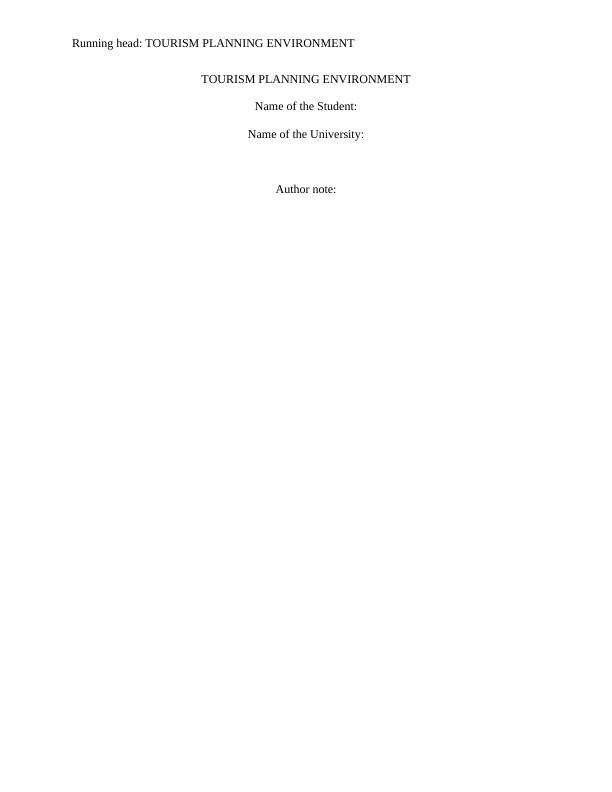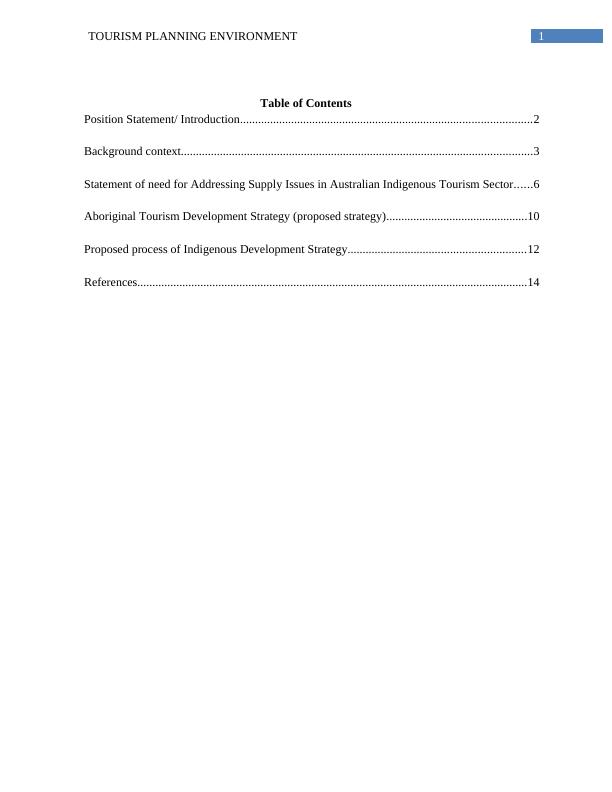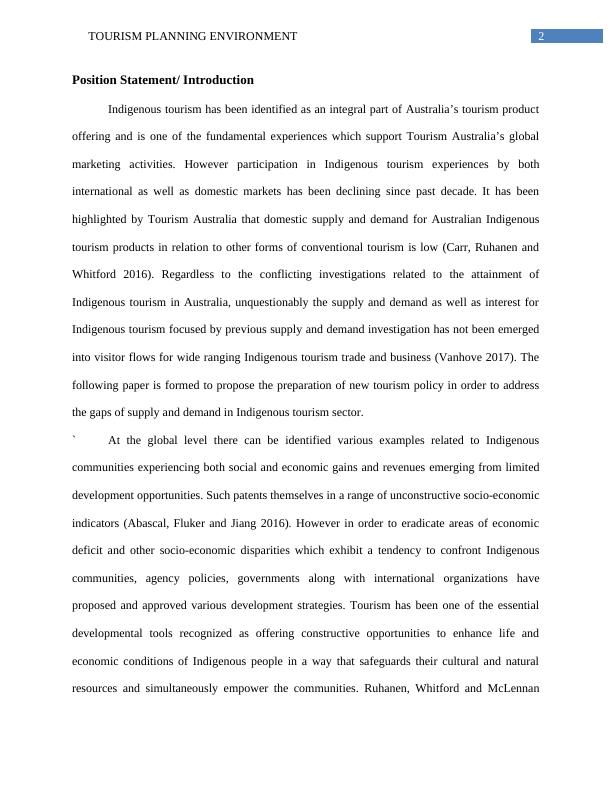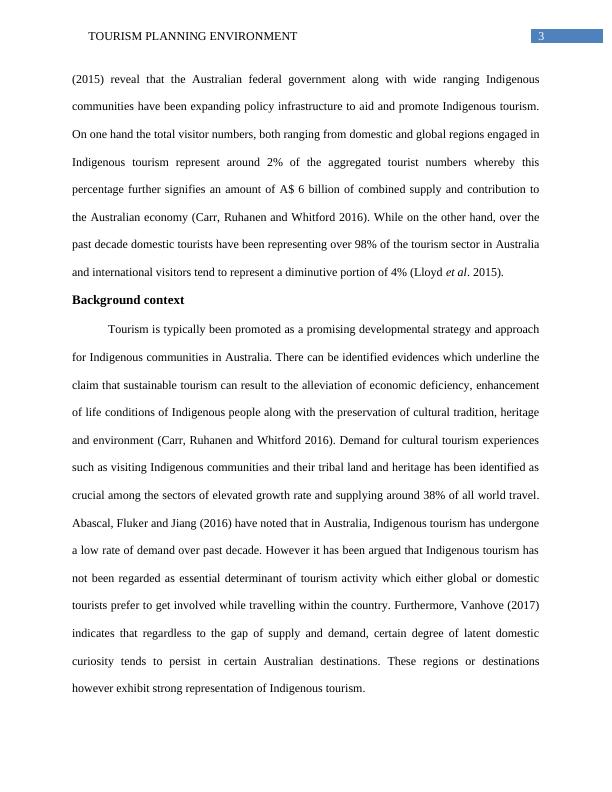Addressing Supply Issues in Australian Indigenous Tourism Sector
16 Pages4521 Words381 Views
Added on 2023-06-07
About This Document
This paper proposes the preparation of new tourism policy in order to address the gaps of supply and demand in Indigenous tourism sector in Australia. It highlights the background context, statement of need, proposed strategy, and process of Indigenous Development Strategy.
Addressing Supply Issues in Australian Indigenous Tourism Sector
Added on 2023-06-07
ShareRelated Documents
End of preview
Want to access all the pages? Upload your documents or become a member.
Indigenous Tourism in Australia Assignment
|12
|4094
|40
Market Of Tourism Article 2022
|2
|930
|27
Tourism Planning Environments: Addressing Challenges and Opportunities with Advanced Technologies
|12
|4164
|456
Culture and Tourism
|4
|703
|365
Sustainability Practice in Tourism: A Case Study of Tranquility at Roseville, Sydney
|10
|2671
|490
Reforms in Australia's Tourism Sector: An Economic Analysis
|13
|3552
|367




